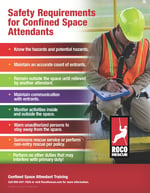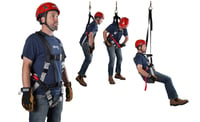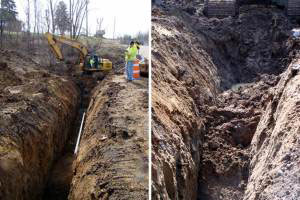 There continues to be a misconception that a confined space attendant (or “hole watch”) is a menial task to be assigned to the greenest, most inexperienced personnel on the job. That’s a dangerous assumption, and it has been a contributing factor in many confined space fatalities.
There continues to be a misconception that a confined space attendant (or “hole watch”) is a menial task to be assigned to the greenest, most inexperienced personnel on the job. That’s a dangerous assumption, and it has been a contributing factor in many confined space fatalities.
In fact, the attendant or hole watch should have a solid understanding of the permit space to be entered. This includes knowing the particulars of any known or potential hazards as well as other pertinent knowledge and skill sets. If you are assigned this crucial role, I hope you understand that the entrant(s) are relying on you. Your performance may have a significant bearing on the outcome, both good and bad.
Do you know everything you need to know in order to perform your duties as a confined space attendant? Don’t assume that you will learn everything you need to know after a two- or three-minute pre-job briefing.
Being an attendant or "hole watch" is a critically important role and failure to properly perform these duties has led to multiple fatalities – both for the entrants and the attendants themselves.
Do understand the known and potential hazards of the confined space. Do take the time to review the SDS (MSDS) for any and all materials or gasses that may be encountered. Do learn what the signs and symptoms of exposure may be. Then, if you detect any of them in the entrant’s behavior or appearance, you can order immediate evacuation.
Don’t gloss over this valuable and readily accessible information only to wonder what caused the entrant(s) to lose consciousness. The SDS (MSDS) provides information on route of exposure; and very importantly, the signs and symptoms of exposure. Don’t miss the opportunity to save the day, and perhaps a life, by learning these early warning signs. This allows evacuation of the space before entrants are no longer able to do so on their own.
Do learn the proper operation of any testing equipment, such as atmospheric monitors. It is also important to understand the limitations of this equipment as well.
Do keep track of all authorized entrants in the space. For entries with multiple entrants, don’t rely on your memory alone. Do use some sort of log or entry roster as a reliable means to accurately identify who is in the space.
Do make sure that you have a reliable means to communicate with the entrants. Do test that means of communication at the very limits of the space to ensure it works. Don’t wait until there is an incident to learn that you cannot alert the entrants, or you cannot hear that their status has changed. If you haven’t heard from the entrants in a while, it can be tempting to go into the space to check on them. This very situation has led to many fatalities in which the attendant was overcome by the same hazard as the authorized entrant(s). At that point, there is no longer anyone available to call for help.
Don’t accept the job assignment until you have been briefed by the entry supervisor on all the planned activities both inside and outside the space. Do remember that oftentimes activities outside the space can create a hazard for the entrants inside the space. Carbon monoxide and spills of hazardous materials are just a couple of examples.
Don’t allow any activities to take place inside or outside the space that are prohibited and are not consistent with the conditions stated on the entry permit, especially if they may create a hazard to the entrants. If those activities were not coordinated and told to you by the entry supervisor, do evacuate the space and call the entry supervisor for guidance.
Don’t leave the space or perform other duties that may interfere with your primary duty of monitoring and protecting the entrants.
Do remain diligent, remember that you are the critical link between the entrants and the rescue service.
Do know how to contact rescue services should they be needed. Don’t wait until it is too late to call for help. Do summons rescue as soon as you determine that the entrants may need assistance escaping from the space. Just remember, you can’t turn back the clock and buy back the time that entrants may have needed to survive. It’s a whole lot easier to turn around the rescue service if it is not needed.
 Don’t allow unauthorized persons to approach or enter the permit space. If you are unable to warn them away, do order the evacuation of the authorized entrants. Do immediately inform the entry supervisor of the situation.
Don’t allow unauthorized persons to approach or enter the permit space. If you are unable to warn them away, do order the evacuation of the authorized entrants. Do immediately inform the entry supervisor of the situation.
Do perform non-entry rescue (retrieval) when needed and if authorized by your employer. Do perform a thorough pre-entry inspection on the retrieval rescue equipment. Do make sure it is appropriate for the type of rescue that may be needed. Do learn and practice the proper operation of the retrieval equipment. Don’t wait until there is an emergency to try and figure it out. Don’t attempt entry rescue unless you are authorized, trained and equipped to do so. Don’t attempt entry rescue until you are relieved by another authorized attendant. Remember, you cannot leave the space unattended!
Don’t take your responsibilities lightly. Do ask the right questions of the entry supervisor and your authorized entrants. Do realize that they are all counting on you. Do ask to be briefed by the entry supervisor regarding any coordination that has been made with other work groups in the area. Do remember that many attendants have perished attempting heroic but ill-advised and unauthorized rescue attempts.
Do remember that your authorized entrants are relying on you. Do take the initiative to learn everything you need to know and how to operate any equipment in support of your entrants. As the hole watch, you are the critical link that can make or break a successful entry operation.
Written by Pat Furr, Safety Officer & VPP Coordinator for Roco Rescue, Inc.

Additional Resources
- Attendant Safety Requirements Poster (pictured here)
- Confined Space Entry Checklist
- Common Causes of Confined Space Fatalities
- Limitations of Atmospheric Monitors


 I then suggest that the team’s training records be reviewed in order to determine what level of training has been completed. I also strongly recommend getting everyone to the same level; especially if your facility is what I refer to as an “island unto itself.” In other words, do you have nearby facilities or other local agencies who can offer additional manpower, equipment, etc. in an emergency – or, are you fairly isolated?
I then suggest that the team’s training records be reviewed in order to determine what level of training has been completed. I also strongly recommend getting everyone to the same level; especially if your facility is what I refer to as an “island unto itself.” In other words, do you have nearby facilities or other local agencies who can offer additional manpower, equipment, etc. in an emergency – or, are you fairly isolated? 

 We all know that initial safety training is a crucial element of our programs that aim to keep our employees protected from harm at work. For any and all hazards (or potential hazards} to which we expose our workers, we must ensure they understand the nature of the hazards and how to protect themselves.
We all know that initial safety training is a crucial element of our programs that aim to keep our employees protected from harm at work. For any and all hazards (or potential hazards} to which we expose our workers, we must ensure they understand the nature of the hazards and how to protect themselves. It seems that every week a new piece of fall protection equipment is brought to market – and for the most part, these emerging technologies make work-at-height safer than ever before. Additionally, these newer fall protection items tend to be lighter, more comfortable, easier to operate, and can even perform multiple safety functions. This is all great news, but not every item/system is right for the varied situations encountered at our workplaces. But when we do introduce a new piece of fall protection equipment to our workforce, it nearly universally calls for some degree of re-training. The manufacturer’s instructions for use may be a great starting point to satisfy this training, but it is always a good idea to provide some degree of formal training on the equipment, and then document that training.
It seems that every week a new piece of fall protection equipment is brought to market – and for the most part, these emerging technologies make work-at-height safer than ever before. Additionally, these newer fall protection items tend to be lighter, more comfortable, easier to operate, and can even perform multiple safety functions. This is all great news, but not every item/system is right for the varied situations encountered at our workplaces. But when we do introduce a new piece of fall protection equipment to our workforce, it nearly universally calls for some degree of re-training. The manufacturer’s instructions for use may be a great starting point to satisfy this training, but it is always a good idea to provide some degree of formal training on the equipment, and then document that training.
 I think it is a safe assumption to say that we have all sat through classes wondering when and hoping for the class to end. Looking at our watch is one thing, but when we are tapping it to see if it is even still working is a really bad sign. I am not suggesting that educators have to provide entertainment, but there is a demonstrated positive difference in classes delivered by an engaging trainer as compared to a very dull, monotonous trainer.
I think it is a safe assumption to say that we have all sat through classes wondering when and hoping for the class to end. Looking at our watch is one thing, but when we are tapping it to see if it is even still working is a really bad sign. I am not suggesting that educators have to provide entertainment, but there is a demonstrated positive difference in classes delivered by an engaging trainer as compared to a very dull, monotonous trainer. A month after a 33-year-old worker died while working in an unprotected trench, OSHA inspectors found another employee of the same Missouri plumbing contractor working in a similarly unprotected trench at another job site. OSHA determined that, in both cases, the company failed to provide basic safeguards to prevent trench collapse and did not train its employees to recognize and avoid cave-in and other hazards. OSHA issued 14 safety violations found during both inspections, and proposed penalties totaling $714,142.
A month after a 33-year-old worker died while working in an unprotected trench, OSHA inspectors found another employee of the same Missouri plumbing contractor working in a similarly unprotected trench at another job site. OSHA determined that, in both cases, the company failed to provide basic safeguards to prevent trench collapse and did not train its employees to recognize and avoid cave-in and other hazards. OSHA issued 14 safety violations found during both inspections, and proposed penalties totaling $714,142. 


